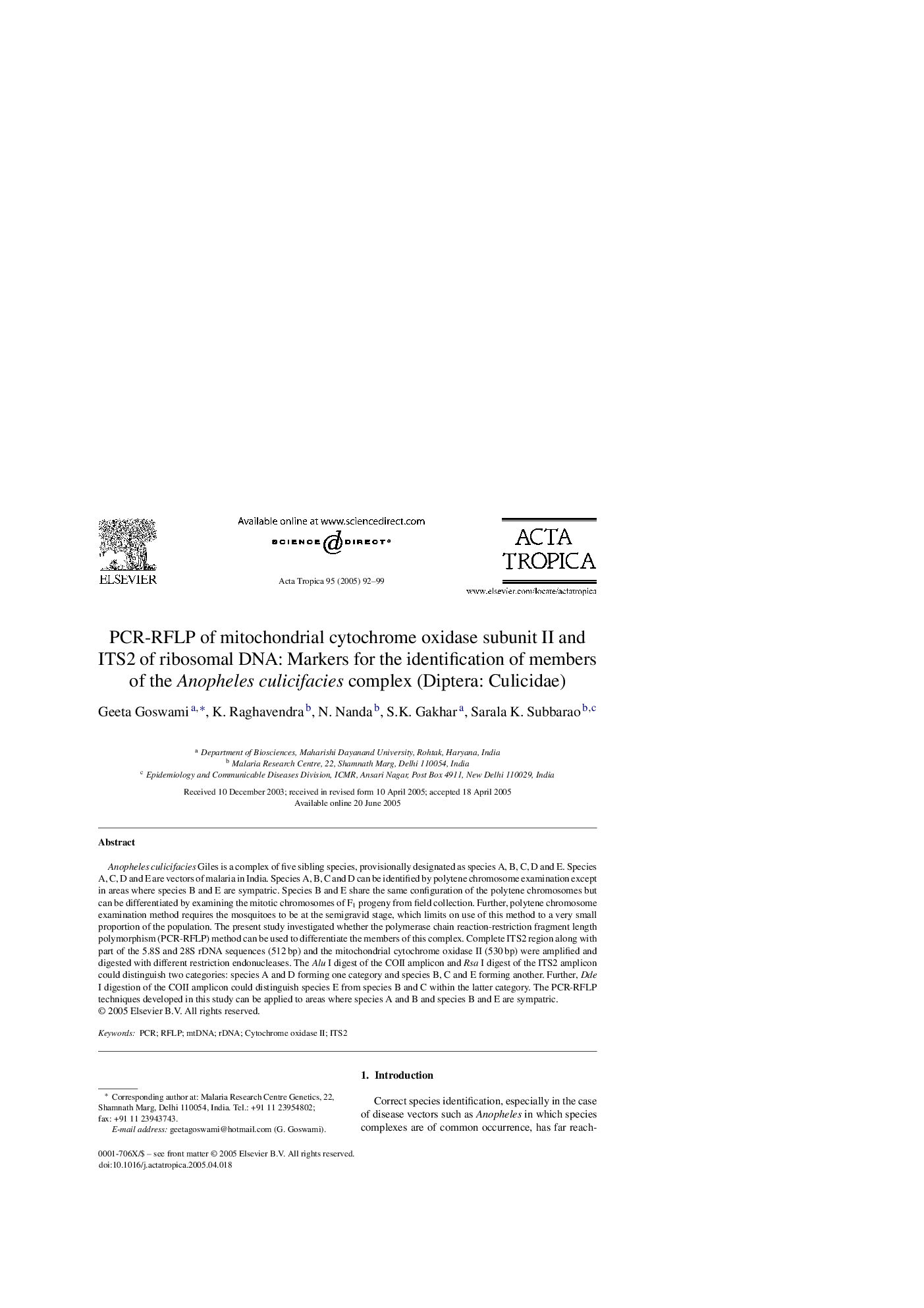| Article ID | Journal | Published Year | Pages | File Type |
|---|---|---|---|---|
| 9274353 | Acta Tropica | 2005 | 8 Pages |
Abstract
Anopheles culicifacies Giles is a complex of five sibling species, provisionally designated as species A, B, C, D and E. Species A, C, D and E are vectors of malaria in India. Species A, B, C and D can be identified by polytene chromosome examination except in areas where species B and E are sympatric. Species B and E share the same configuration of the polytene chromosomes but can be differentiated by examining the mitotic chromosomes of F1 progeny from field collection. Further, polytene chromosome examination method requires the mosquitoes to be at the semigravid stage, which limits on use of this method to a very small proportion of the population. The present study investigated whether the polymerase chain reaction-restriction fragment length polymorphism (PCR-RFLP) method can be used to differentiate the members of this complex. Complete ITS2 region along with part of the 5.8S and 28S rDNA sequences (512Â bp) and the mitochondrial cytochrome oxidase II (530Â bp) were amplified and digested with different restriction endonucleases. The Alu I digest of the COII amplicon and Rsa I digest of the ITS2 amplicon could distinguish two categories: species A and D forming one category and species B, C and E forming another. Further, Dde I digestion of the COII amplicon could distinguish species E from species B and C within the latter category. The PCR-RFLP techniques developed in this study can be applied to areas where species A and B and species B and E are sympatric.
Related Topics
Life Sciences
Immunology and Microbiology
Parasitology
Authors
Geeta Goswami, K. Raghavendra, N. Nanda, S.K. Gakhar, Sarala K. Subbarao,
